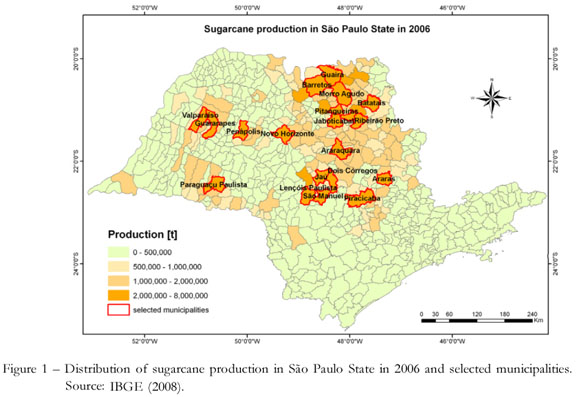The current system used in Brazil for sugarcane (Saccharum officinarum L.) crop forecasting relies mainly on subjective information provided by sugar mill technicians and on information about demands of raw agricultural products from industry. This study evaluated the feasibility to estimate the yield at municipality level in São Paulo State, Brazil, using 10-day periods of SPOT Vegetation NDVI images and ECMWF meteorological data. Twenty municipalities and seven cropping seasons were selected between 1999 and 2006. The plant development cycle was divided into four phases, according to the sugarcane physiology, obtaining spectral and meteorological attributes for each phase. The most important attributes were selected and the average yield was classified according to a decision tree. Values obtained from the NDVI time profile from December to January next year enabled to classify yields into three classes: below average, average and above average. The results were more effective for 'average' and 'above average' classes, with 86.5 and 66.7% accuracy respectively. Monitoring sugarcane planted areas using SPOT Vegetation images allowed previous analysis and predictions on the average municipal yield trend.
NDVI; remote sensing; data mining; crop forecasting












